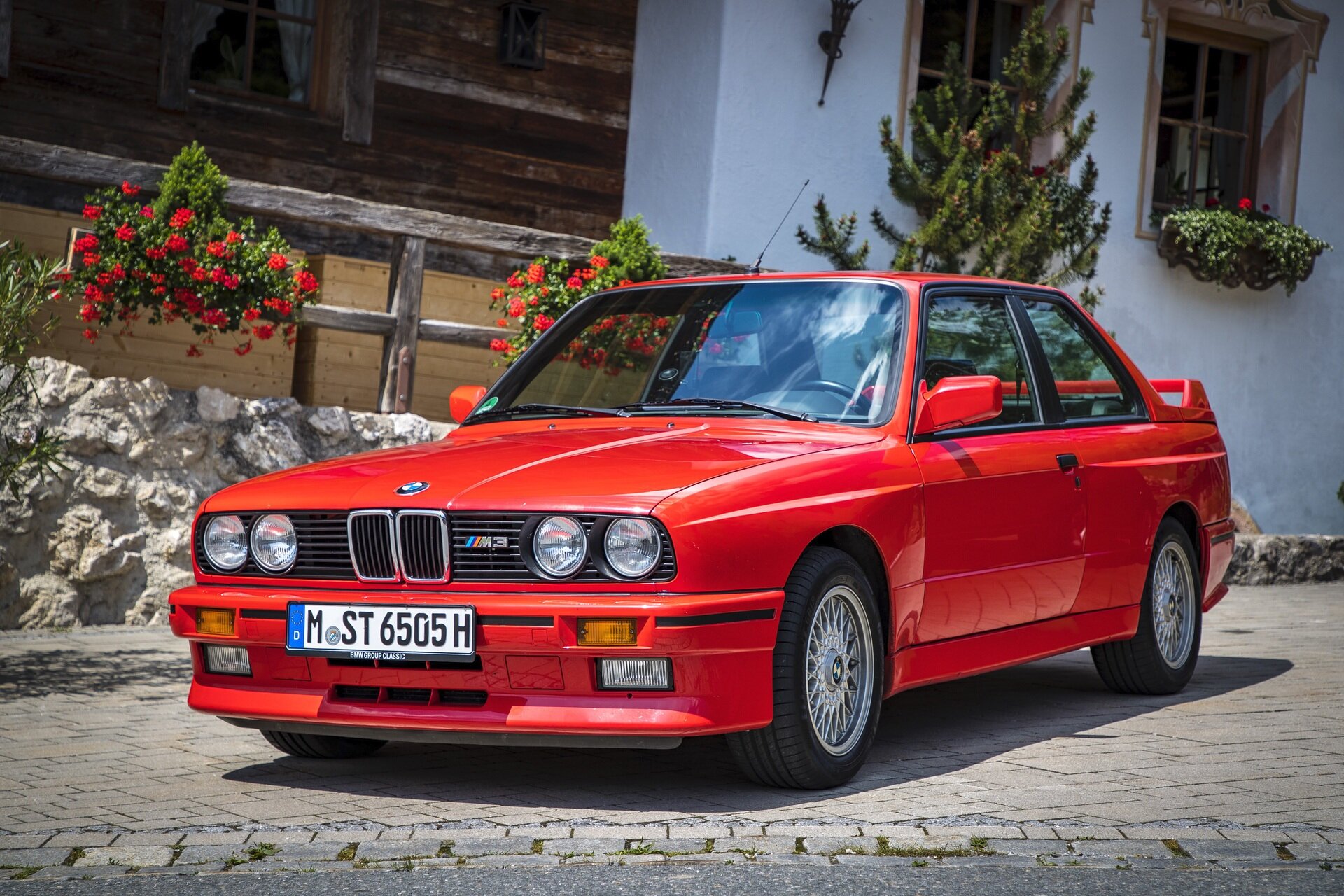Modern Classic: BMW 3 Series E30
The BMW E30 3 Series had the classic ‘three box’ design, though this M3 had a rear spoiler. Fancy. Photo: BMW
Today's classic harks back to the late 1980's – the BMW E30 that came into life in 1982, as the second generation 3 Series, to replace the E21.
In my teenage years I had a fascination for these as a wanna-be "luxo-business exec". I wanted to be a merchant banker, lawyer, TV newsreader, Dallas star all rolled into one and a BMW 3 Series was on my image board, probably in six cylinder convertible form if I could master it, and definitely in black.
But in the late 1980's I was too young to drive and made do with bold dreams and car magazines. Though I remember some sneaky car pamphlets from enquiries to the dealer on behalf of my grandmother (who didn't even have a licence).
Back then the BMW range was simple: the 3 Series, 5 Series, 6 Series and 7 Series. The 3 Series in the 1980's stood for the ‘mini’ BMW. In that era it meant you got into a 3 Series but you really aspired for the larger 5 or maybe even a 7 one day.
With the twin headlight and kidney grille, there was no denying the 3 was anything but a BMW, (although the more upscale family resemblance grew even stronger on the third generation E36 which arrived in 1994).
The BMW 3 Series E21 (above) heralded an important era for the German brand. Photo: BMW
In the E30, three styles were largely offered around the world; from the sedan, the trendy coupe and the even slicker convertible. In some markets a wagon was offered too called Touring by BMW. The picks were the mid-cycle facelift models from 1987 onwards with the base 318i gaining an improved M40 fuel-injected 1.8-litre four cylinder engine putting out 85kW of power, while a 318is coupe with Volkswagen GTI-like tartan seats was introduced in 1989 with the M42 engine putting out 103kW.
The range topper was the beautiful 2-litre six cylinder 325i 125kW with its "onboard computer” (1980's speak for electronics measuring fuel consumption, average speed and other must haves).
An M3 weaved into the global range from 1986 and the final iteration of this, in four cylinder form, was good for 175kW. Interestingly, the second generation M3 was never sold in New Zealand, but the local importer created a special M325i version that had many of the M3 parts including the Motorsport-tuned suspension, M-Technic body package, 15in BBS cross spoke wheels and a limited slip differential. It maintained the standard 325i engine though.
I landed my first job out of university in Australia in the late 1990's in recruitment at Morgan & Banks, then the "place to be" in the Asia-Pacific recruitment industry. Both my bosses, a couple, had his and her black and white E30 3 Series five-speed manual BMW coupes.
I couldn't believe my luck that the couple, Paul and Fiona, had such impeccable taste and immediately I knew I had made the right career choice! As hard as I tried, Fiona wouldn't let me drive her impeccable black coupe but Paul indulged me once and let me drive in his white 318i, and I could almost not hold my excitement.
When my bosses were sent off for their first international assignment a year later, I had first dibs on both their BMWs to my shock and delight. As an impoverished 23-year-old struggling to pay my rent, I politely said no to either BMW. I was envious of my colleague Georgia buying Fiona’s car and I instead kept working hard and saving for the future.
The BMW 3 Series E36 had such features as electric windows. Photos: BMW
But the BMW bug was in me. A year later, with a "Consultant of the Year" trophy on my desk, I would sell the first ever car I'd bought, a silver 1989 Mitsubishi Lancer, and upgraded to a four-year-old E36 ‘Heinz tomato sauce red’ BMW 318i 5-speed manual. My BMW had black bumpers when I got it, although I would later get them painted matching ‘tomato sauce red’ with the body, to make it look like a 318is. Mine also had the alloy wheels of the 325i and a few options for its time including electric windows and heck, even an electric sunroof!
TradeMe reveals several E30 examples still on streets in New Zealand, although all import example as opposed to NZ New. A manual 1989 imported "Touring" with 177,000kms is listed at $14,000. A manual imported 1988 BMW 325i, with 243,000kms is listed at $15,000. However the best pick goes to a 1987 M3, with 149,000kms at $110,000.
The BMW E30: a beautiful classic car of its era, harking back to the simplicity of a three box design. And a car a gangly teenager's dreams were made from!



